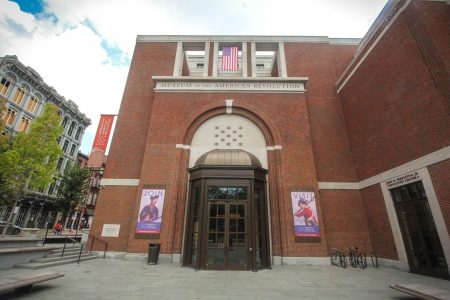
There are thousands of museums across the country and the world. The oldest known may be from 530 BC, built by Ennigaldi, the daughter of the last king of the Babylonian Empire. More open every year. They serve many purposes – to educate people who have new to the subject, to present artifacts or locations that can be seen nowhere else, to advocate for a particular opinion or worldview, and even to just keep the visitors entertained.
Hopefully we have all been to museums that we thoroughly enjoyed, that kept us interested and left us with new information and thoughts to chew on as we left. We’ve probably all also had some less positive experiences – walking into a museum to see little more than walls and walls of mind numbing text, or rooms full of rusty bits of metal that we have no idea what use they ever could have served.
Here at Discerning History we have been to our fair share of museums, so we’d like to present some thoughts on what makes a good museum, and some ideas on how to choose which ones to visit.

Artifacts
What makes museums unique? Vast amounts of information are just a click away in the internet age, and untold numbers of books could be ordered to your doorstep with two day shipping. In the modern era, why do we need to go to a specific location to learn about history? One of the best answers is artifacts. Some museums try to give you the experience of seeing artifacts in 3d on their website, but there is nothing like standing in front of a piece of history, seeing the scale, colors and proportions of the genuine object. Look for a museum that places an emphasis on artifacts, because that is the thing you can get nowhere else.
Also important is what objects they have. One of the best examples of this we have seen was the Museum of the Confederacy in Richmond, Virginia.1 You can go to many places to see examples of the accouterments of a Civil War soldier. But what they had was better. When you saw an officer’s coat, it wasn’t just any coat – it was the coat Stonewall Jackson was wearing when he was shot at Chancellorsville. When you saw a tent, it was Robert E. Lee’s tent in which he made countless momentous decisions. When you saw a battle flag, it was the battle-scarred flag of the iconic 26th North Carolina. When you saw an officer’s hat, it was the hat Armistead carried on the tip of his sword while leading Picket’s Charge. Their exhibits were not extensive as many other museums, but for a Civil War buff it was glorious. Nearly every artifact on display was carried by a historical figure who had been written about many hundreds of times.

Interpretation
Museums from an older era had no lack of artifacts. They were packed floor to ceiling with objects, stacked behind doors and spilling out of drawers. But they completely lacked context and sometimes even labels. Unless you are already quite familiar with the history, and already know what you are looking at, you will not learn much from a pile of objects.
Be on the watch for what agenda museums are pushing. In the high level summaries that their panels give, it is easy to pass off a popular interpretation as fact without having to bother to stop and present evidence. It’s easy to gloss over inconvenient truths. One example of these is the Museum of African American History in Washington DC. They give more space to Anita Hill than to the man she accused, Supreme Court Justice Clarence Thomas. He is one of the most powerful and influential African Americans in this country’s history, but his politics and beliefs don’t match those of the museum’s curators, so he is conveniently glossed over.2
Well planned and written displays can do a great job introducing you to a topic or reminding you of the highlights of a story. But consider doing some more reading on your own before making up your mind on lessons the museum is trying to teach us.
Technology
Many modern museums have swung the other direction from those stuffy old museums that are heavy on items and light on words. Artifacts are moved into storage and replaced with new high tech displays. For newer museums, amassing a large collection of artifacts to show can be quite a challenge. If you wanted to open a museum on George Washington, where would you go to find good artifacts that were not already on display in another museum? What few are on the market for sale, would be quite expensive. There are quite a few museums that you visit, especially smaller ones that have opened recently, and all you find are a few rather uninteresting technical displays, some well-designed walls of text and graphics, some reproduction items from the era and just a few genuine, though insignificant, artifacts. Those visits will probably leave you unsatisfied.
Walk into nearly any museum these days, and the employees will direct you first to their theater to watch their film. These range in quality from that of a middle school film project, to Hollywood productions. Even if films are big budget affairs, they can be fictionalized dramatizations that contain few details beyond what is printed on the park map, or they can be documentaries better than anything you can get for love or money at home. Especially suited for someone who is a novice to the subjects presented, these films are sometimes worth your while. Use your best judgment.
Technological displays can be quite helpful. Visualizations of battles and campaigns can be quite dramatic, and very helpful in understanding why events took place as they did. Reconstructed models of how cities or buildings looked long ago are usually something you can find nowhere else. Many computerized displays are directed at children. While they may not contain much information, perhaps they hold their attention long enough to get something useful in their head. Some are expensive gimmicks, this is another area where museums can give you something that you can’t get at home.

What Museum Should You Visit?
To summarize, here some tips on how to find great museums:
- Look for museums with solid collection of artifacts instead of just multimedia presentations.
- Older and smaller museums can be great, but may not do a good job explaining what you are looking at.
- Newer museums can do a better job introducing you to a topic, and often have flashy and engaging high tech displays.
- Watch for the museum’s bias and form your own opinions.
What are your favorite museums? What do you look for in a good museum? Let us know in the comment section below.
Footnotes
1. Several years ago they merged with another museum, and we have not had the opportunity to visit since. We can only hope that they preserved the wonderful experience of the Museum of the Confederacy, though our hopes are not high.
2. Justice delayed: Anti-conservative bias kept Clarence Thomas from black history museum by Carrie Severino. (The Hill, 9/29/17).





I echo your comments on the Museum of the Confederacy, as well as other comments about museums. I remember getting rave reviews for the Stonewall Jackson Headquarters Museum in Winchester, Virginia. Another item to consider in visiting a museum is hands on exhibits for children. Some of them are more informative than others, but they help to engage interest. I am surprised you didn’t mention having text in English is a plus!